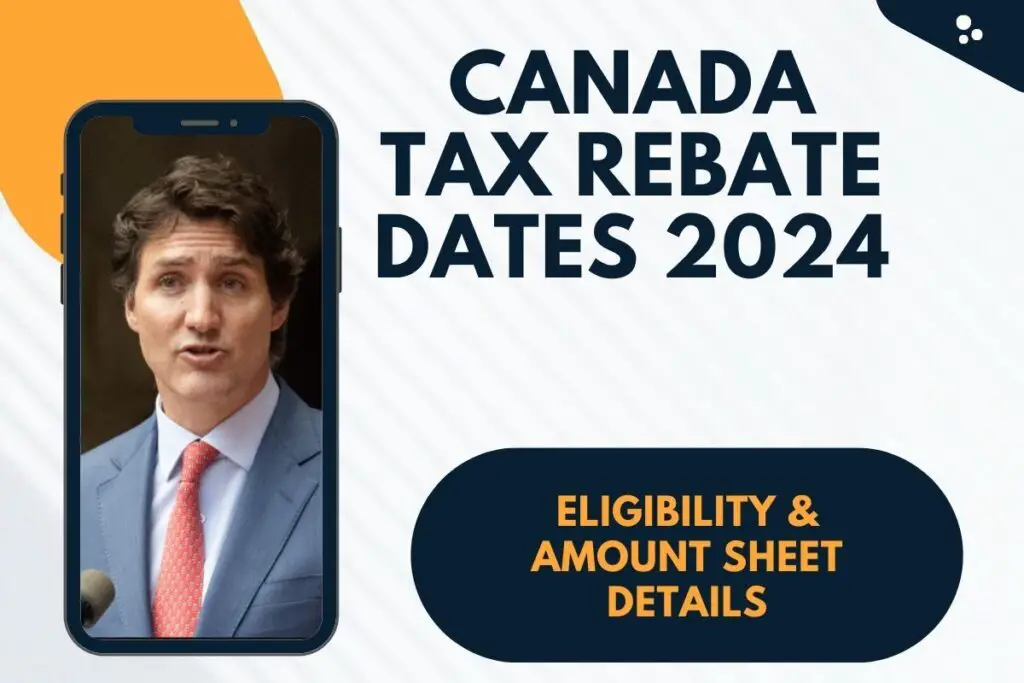An increase in the carbon tax from $65 per tonne to $80 per tonne was implemented by the federal government on April 1, 2024, which increased the cost of fossil fuels.
Through an increase in the price of polluting fuels like petrol and diesel, this carbon tax is intended to encourage people in Canada to adopt decisions that are more environmentally friendly. Since the tax was initially implemented in 2019, the price of petrol has climbed by 17.6 cents per litre, and the most recent increase brought a significant increase of 3.3 cents per litre in the price of petrol.
On the other hand, to partially compensate for the financial burden of the carbon tax, the federal government also provides a Canadian carbon rebate to all qualifying Canadians who are affected by the pricing of pollution. Both the rebate and the carbon tax are increasing in tandem.
In the following paragraphs, we will describe how the carbon rebate operates, who is eligible for it, and how much money you may anticipate receiving back.
Canada Tax Rebate Dates 2024
To assist qualifying people and families in offsetting the expense of the federal pollution pricing, the Canada Carbon Rebate (CCR) is a benefit that is exempt from applying taxes.
Canadians who are eligible and live in jurisdictions that are affected by the federal carbon price system are eligible to receive the rebate. The people of British Columbia, Quebec, and the Northwest Territories are not eligible for the federal refund since these provinces have their carbon pricing programs. The programs in British Columbia and the Northwest Territories are comparable to the federal plan, but the program in Quebec is based on a cap-and-trade system.
The refund was referred to as the climate action incentive, or CAI, from the year 2018 to the year 2020. Between the years 2021 and 2023, it was referred to as the climate action incentive payment, or CAIP for short. At the beginning of the year 2024, it was renamed the Canada Carbon Rebate.
Canada Grocery Rebate Ontario
How does the carbon rebate program in Canada operate?
There are four times a year that the CCR is distributed to all Canadians who are eligible for it: April 15, June 15, October 15, and January 15. Your eligibility is determined not only by the province in which you reside but also by the number of individuals who dwell in your household and your current province of residency. Furthermore, there is a supplement that is available for people who live in rural and small villages. You simply need to file your income tax on an annual basis; you are not required to apply the CCR.
According to the Parliamentary Budget Office, nearly eighty per cent of Canadians receive more money from the refunds than they paid in carbon tax.

It is for this reason that both the carbon tax and the rebate have been implemented: the carbon tax is intended to encourage individuals to select fuel sources that produce less pollution, such as taking public transport or purchasing a hybrid vehicle. When you buy fossil fuels, you are the only one who is required to pay the tax; nevertheless, you are eligible for the rebate regardless.
The refund allows you to keep more money in your pocket, so if you minimise the amount of money you spend on fossil fuels, you will be eligible for it. The rebate is not designed to cover the cost of fuel; rather, it is intended to cover the differential cost of carbon pollution pricing, which refers to the amount of your fuel bill that is allocated to the tax.
What Is the Amount of the Carbon Rebate in Canada? Amount Sheet details
It is estimated that nearly 12 million Canadians received reimbursements on their carbon taxes, totalling around $2.3 billion in January of 2024. Both the province in which you reside and the number of people in your home who are eligible for CCR will determine the amount of CCR that you get.
If you are a family of four consisting of two adults and two children, the following is a breakdown of the current base amount of each quarterly payment, as well as an example of what that payment looks like:
The individual spouse or common-law partner of the province or any child under the age of 19The first child in a family with only one parent family of four is eligible for a quarterly or annual refund.
| Province | Individual | Spouse/Common-law partner | Per child under 19 | First child in a single-parent family | Quarterly/Annual rebate for a family of four |
| Alberta | $225 | $112.50 | $56.25 | $112.50 | $450/$1,800 |
| Manitoba | $150 | $75 | $37.50 | $75 | $300/$1,200 |
| New Brunswick | $95 | $47.50 | $23.75 | $47.50 | $190/$760 |
| Newfoundland/ Labrador | $149 | $74.50 | $37.25 | $74.50 | $298/$1,192 |
| Nova Scotia | $103 | $51.50 | $25.75 | $51.50 | $206/$824 |
| Ontario | $140 | $70 | $35 | $70 | $280/$1,120 |
| PEI | $110 | $55 | $27.50 | $55 | $220/$880 |
| Saskatchewan | $188 | $94 | $47 | $94 | $376/$1,504 |
In addition, residents living outside of city centres receive a rural supplement that is twenty per cent higher than the base amount. This is because they are more likely to rely on fossil fuels and have fewer possibilities for alternatives that are more environmentally friendly.
Before the first of April in 2024, the rural supplement was equal to ten per cent of the basic amount. This indicates that a home of four in Bragg Creek, Alberta, which has a population of 432 in 2021, would receive $2,160 in annual rebates, whilst a household of four in Calgary would receive $1,800 in rebates.
Residents of the provinces of Alberta, Saskatchewan, Manitoba, Ontario, Newfoundland and Labrador, New Brunswick, and Nova Scotia who have their primary residence located outside of a census metropolitan area (CMA) that has a total population of at least 100,000 are eligible to receive the rural bonus. Eighty-four per cent of Canada’s population resides within a census metropolitan area (CMA), and more than half of the population resides in the ten largest CMAs (the top three are Toronto, Montreal, and Vancouver).
This information is based on the census that was conducted in 2021. In Prince Edward Island, the rural supplement is available to all recipients of the CCR who are eligible for it. This is the location where you can check to see if you are qualified for the rural supplement.
Who Is Eligible to Receive the Carbon Rebate from Canada?
The following requirements must be satisfied to be eligible for the CCR:
At the beginning of the month before the payment, you are a resident of Canada.
The provinces of Alberta, Manitoba, New Brunswick, Newfoundland and Labrador, Nova Scotia, Ontario, Prince Edward Island, or Saskatchewan are the ones in which you reside.
It is at least 19 years old that you are. (You are eligible if you are under the age of 19 and you have a spouse or common-law partner or if you are a parent and you reside with your child.)
If all of the following prerequisites are met, then you have a child who is eligible for the program:
All of your children are younger than 19 years old.
Your kid is a resident of your home. (If you share custody of a child, you will be entitled to fifty per cent of the benefit for that kid.)
Your child is mostly under your care, and you are the primary person accountable for their upbringing.
The Canada Child Benefit (CCB) or the Goods and Services Tax (GST/HST) credit has already been registered for your child.
Federal Retirees Pension Increase
CCB Payment Dates
Your spouse or common-law partner is the only person who is eligible to receive the payment for the family if you have a spouse or partner. The payment of the CCR is made to the individual who submits their taxes first.
It does not make a difference who files first because the payment is the same regardless of the individual’s income. Because the CCR is based on your household, both spouses or common-law partners must file their income tax returns without regard to whether or not there is any income to report.
By When can I expect to receive my CO2 rebate from Canada?
Four times a year, on April 15, June 15, October 15, and January 15, the compensation for the CCR is distributed. To be eligible for the payment that will be sent on April 15, 2024, you are required to have electronically submitted your tax return by March 15, 2024. If you did not submit your return by the specified date, it will take anywhere from six to eight weeks after your return has been evaluated before you see your rebate.
There is a possibility that you will also receive your CCR through direct deposit if you have already established a direct deposit system for receiving your tax refund. There should be a reference name of “Canada Carbon Rebate” for the transactions; however, because banks are not required to use the descriptive language that the federal government provides, the deposit may appear to be something different, such as “Canada Fed.” You can verify the date when your next payment is expected to be sent to you by logging in to My Account on the website of the Canada Revenue Agency (CRA).
Conclusion
While the carbon tax raises the price of common fossil fuels like petrol and natural gas, the Canada carbon refund helps you keep more money in your bank account. This is because the carbon tax adds to the cost of purchasing these fuels.
John Stepp is a notable financial journalist with degrees from IIT Delhi and Stanford University. With a decade in media and a keen eye for social security and finance, he simplifies complex financial subjects. An outdoors enthusiast and photographer, John Stepp enriches his financial insights with diverse perspectives, aiming to equip readers with clear, impactful financial knowledge.

